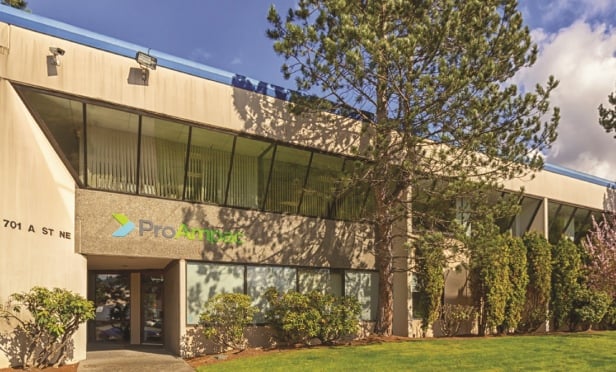Doing Phase 1 Environmental Site Assessments in California can be a little different than in other states. Of course each state is different, but California has several factors that make environmental assessments pretty unique here.
Registered Environmental Professional
California is one of the only states that register environmental professionals. ASTM E1527-05 requires that an environmental professional perform the Phase 1 Environmental Site Assessment; therefore, a quality sensitive client will ask if their California environmental consultant is a Registered Environmental Assessor (REA).
California Regulatory Programs
Another reason Phase 1 Environmental Site Assessments in California are different is due to the many and diverse regulatory programs in California that can impact the Phase 1 ESA. These regulatory programs are often pertinent to records requests and file reviews done during the Phase 1 Environmental Report – the environmental professional has to know where to look or they could be missing important information about the property. Some of these programs relate more to subsurface investigations and site cleanup, but they are also relevant to the Phase 1 ESA world. The environmental professional needs to understand the regulatory framework for what would be considered a recognized environmental condition and what might not be – for ex., if a site is contaminated, is contamination above pertinent regulatory levels in California or not?
It is important to use a firm familiar with these programs:
1) Regional Water Quality Control Boards: In most states the regulations are statewide rules with maybe some variations for cities and counties. In California, the State Water Board grants a lot of power and autonomy to the Regional Water Quality Control Boards. The regional water boards are organized generally by watershed and may split counties. Water boards may have very different regulations. For example, the San Francisco Bay Regional Water Quality Control Board developed Environmental Screening Levels (ESLs) for soil and groundwater contamination, whereas the Los Angeles Regional Water Quality Control Board uses different screening levels including Soil Screening Levels, CHHSLs for soil-gas (see below), and Maximum Contaminant Levels (MCLs) for groundwater.
2) CHHSLs: The California Environmental Protection Agency (EPA) published the California Human Health Screening Levels (CHHSLs) in 2005. The CHHSLs provide the user with a chemical specific look up table for what levels of soil gas or indoor air concentrations represent a threat to human health. CHHSLs are not intended to be regulatory numbers, but are often treated as such. CHHSLs are also famously conservative. You need an environmental consultant doing your Phase 1 ESA that knows how to interpret soil gas and indoor air data in relation to CHHSLs and this requires a lot of California experience.
3) CUPAs: Certified Unified Program Agency (CUPAs) have a lot of power in California. CUPAs are city or county agencies that have been more or less deputized to handle certain regulatory functions. An example of a CUPA is the City of Los Angeles Fire Department, which oversees releases from underground storage tanks (USTs), termed leaking USTs or LUSTs. To do proper regulatory due diligence during a Phase 1 Environmental Site Assessment your environmental professional must understand the California CUPAs.
4) CEQA: The California Environmental Quality Act (CEQA) is California’s equivalent of the National Environmental Protection Act (NEPA). A Phase 1 Environmental Site Assessment sometimes has to deal with CEQA/NEPA issues like wetlands, endangered species, and/or historical resources as additional scope items.
These programs can sometimes overlap and cause some interesting jurisdictional challenges.
For example, a contaminated site in Los Angeles County might be regulated by one of many regulatory programs, depending on factors including the site location, type of contamination, type of impact (soil vs. groundwater), and human health risks. The lead agency might be: a city fire department (CUPA); the LA County Department of Public Works (LACDPW); the LA County Fire Department, Health Hazardous Materials Division (CUPA); the Los Angeles Regional Water Quality Control Board; or the Department of Toxic Substance Controls (DTSC). In some instances a site might start with one agency and then move to another. Again, this scenario has more to do with site remediation than the Phase 1 Environmental Report, but it is important to understand early on.
In the Bay Area and Northern California there are three regional water boards to be familiar with: San Francisco (the main district covering the nine Bay Area counties), North Coastal, and Central Coastal water boards. These three water boards are sometimes referred to as the TriRegional Water Boards. There are many local CUPAs including the City and County of San Francisco Public Health Department, San Mateo County Environmental Health, Santa Clara County Environmental Health, Alameda County Environmental Health, Marin County Department of Public Works, Sonoma County Office of Emergency Services, Napa County Department of Environmental Management, Contra Costa County Health Services Department, and Solano County Environmental Health Department. Larger cities within these counties such as Oakland, Santa Rosa, the City of Santa Clara, and Fremont have fire departments that act as the local CUPAs.
These are just a few of the unique factors of doing Phase 1 Environmental Reports in California. There is a method to the madness, you just have to know what it is. Hence the importance of an environmental professional with intimate California knowledge.
© Touchpoint Markets, All Rights Reserved. Request academic re-use from www.copyright.com. All other uses, submit a request to [email protected]. For more inforrmation visit Asset & Logo Licensing.






